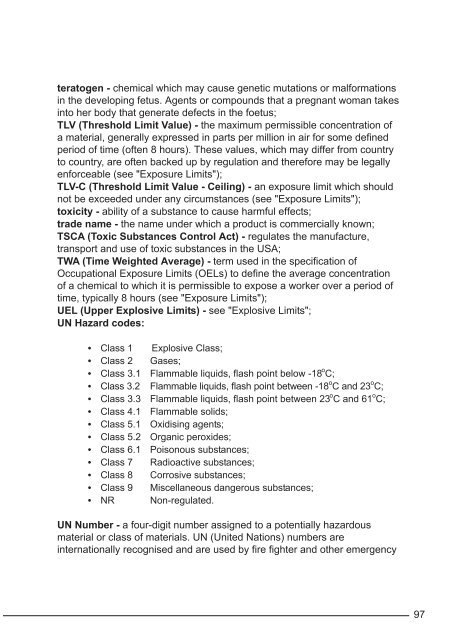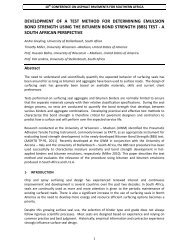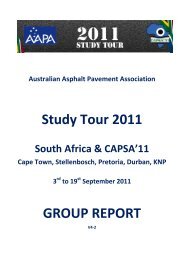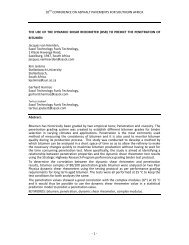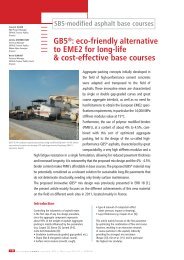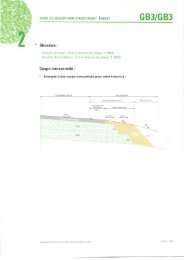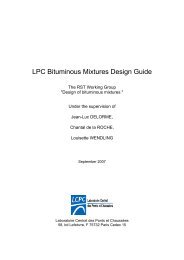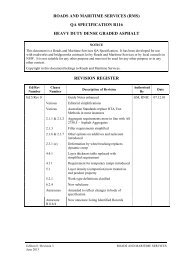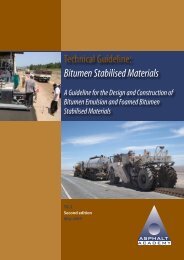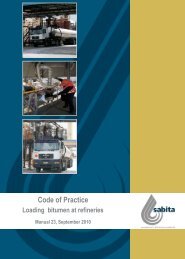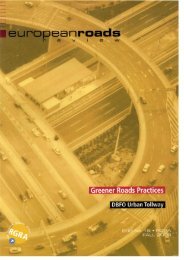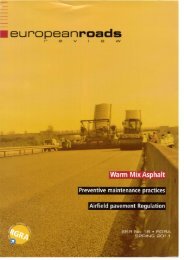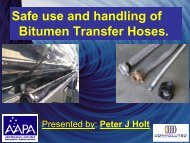Guide to the safe handling of solvents in a bituminous ... - Aapaq.org
Guide to the safe handling of solvents in a bituminous ... - Aapaq.org
Guide to the safe handling of solvents in a bituminous ... - Aapaq.org
- No tags were found...
You also want an ePaper? Increase the reach of your titles
YUMPU automatically turns print PDFs into web optimized ePapers that Google loves.
tera<strong>to</strong>gen - chemical which may cause genetic mutations or malformations<strong>in</strong> <strong>the</strong> develop<strong>in</strong>g fetus. Agents or compounds that a pregnant woman takes<strong>in</strong><strong>to</strong> her body that generate defects <strong>in</strong> <strong>the</strong> foetus;TLV (Threshold Limit Value) - <strong>the</strong> maximum permissible concentration <strong>of</strong>a material, generally expressed <strong>in</strong> parts per million <strong>in</strong> air for some def<strong>in</strong>edperiod <strong>of</strong> time (<strong>of</strong>ten 8 hours). These values, which may differ from country<strong>to</strong> country, are <strong>of</strong>ten backed up by regulation and <strong>the</strong>refore may be legallyenforceable (see "Exposure Limits");TLV-C (Threshold Limit Value - Ceil<strong>in</strong>g) - an exposure limit which shouldnot be exceeded under any circumstances (see "Exposure Limits");<strong>to</strong>xicity - ability <strong>of</strong> a substance <strong>to</strong> cause harmful effects;trade name - <strong>the</strong> name under which a product is commercially known;TSCA (Toxic Substances Control Act) - regulates <strong>the</strong> manufacture,transport and use <strong>of</strong> <strong>to</strong>xic substances <strong>in</strong> <strong>the</strong> USA;TWA (Time Weighted Average) - term used <strong>in</strong> <strong>the</strong> specification <strong>of</strong>Occupational Exposure Limits (OELs) <strong>to</strong> def<strong>in</strong>e <strong>the</strong> average concentration<strong>of</strong> a chemical <strong>to</strong> which it is permissible <strong>to</strong> expose a worker over a period <strong>of</strong>time, typically 8 hours (see "Exposure Limits");UEL (Upper Explosive Limits) - see "Explosive Limits";UN Hazard codes:• Class 1 Explosive Class;• Class 2 Gases;• Class 3.1 Flammable liquids, flash po<strong>in</strong>t below -18 o C;• Class 3.2 Flammable liquids, flash po<strong>in</strong>t between -18 o C and 23 o C;• Class 3.3 Flammable liquids, flash po<strong>in</strong>t between 23 o C and 61 o C;• Class 4.1 Flammable solids;• Class 5.1 Oxidis<strong>in</strong>g agents;• Class 5.2 Organic peroxides;• Class 6.1 Poisonous substances;• Class 7 Radioactive substances;• Class 8 Corrosive substances;• Class 9 Miscellaneous dangerous substances;• NR Non-regulated.UN Number - a four-digit number assigned <strong>to</strong> a potentially hazardousmaterial or class <strong>of</strong> materials. UN (United Nations) numbers are<strong>in</strong>ternationally recognised and are used by fire fighter and o<strong>the</strong>r emergency97


